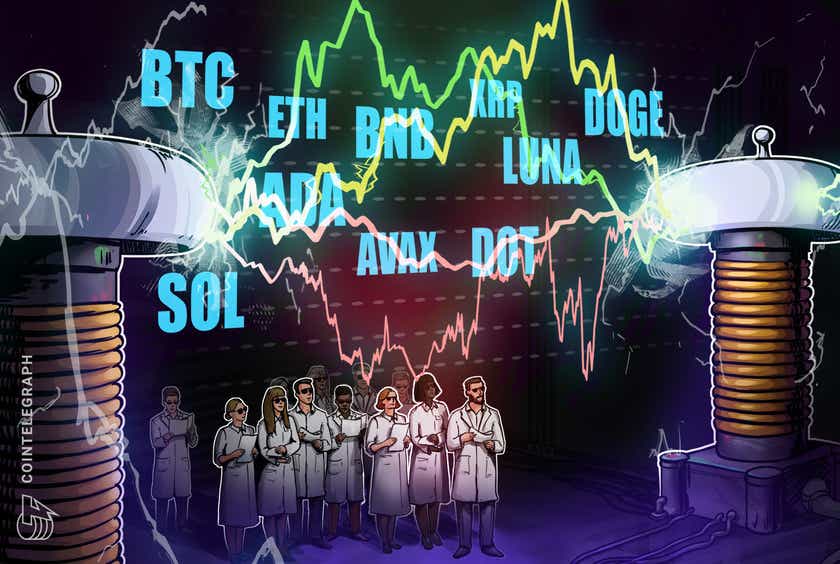Crypto Derivatives Might Drive a New Cycle of Mass Adoption
Like every maturing industry, the cryptocurrency market is experiencing extensive developments on many fronts. The potential continues growing every year — from the emergence of initial coin offerings, the first blockchain-based projects and speculation on Bitcoin’s (BTC) price to decentralized finance and central bank digital currencies.
Crypto has never run out of hot topics. Now, in 2020, the crypto asset field is no longer regarded as just another “dot-com bubble.” The subject is gaining more traction over the globe, and as COVID-19’s emergence has streamlined digital assets and crypto’s popularity, mainstream acceptance is just a few steps away. The derivatives market play may be too complicated for mainstream users, but it’s one of the currently popular directions that must not be neglected.
Leveraging the opportunity in crypto market reality
Alongside increasing interest from the general public and institutions, the trade volumes on global cryptocurrency platforms have been continually growing over the past few years, and so too has the range of trading products that further support crypto’s confident march onward.
Derivatives are an essential part of every market development cycle, with one of the key drivers of the crypto trading field being the derivatives trading segment. In today’s world, where Bitcoin is well recognized by major institutional investors and every third global company buys crypto, monthly trade volumes have reached hundreds of billions of dollars.
The primary crypto derivatives products include futures, options and swaps, mostly offered against the number one asset — Bitcoin. Crypto derivatives trading is popular among the crypto community, as it represents an option to manage risks efficiently and utilize leverage options to maximize profits at the same time.
With the COVID-19 pandemic ravaging the world and financial systems recovering from the shock, the crypto derivatives market started growing significantly, reaching an all-time high volume of $600 billion in March. Then, according to recent reports issued by CryptoCompare, crypto-backed derivatives trading of both perpetual swap and futures contracts reached another all-time high volume of $602 billion in May.
So, what’s the reason for such a massive surge in crypto derivatives trading during the last few months? Nothing unusual — it’s quite a natural phenomenon. Let’s compare the bond market and the stock market. In the stock market, one can potentially get higher returns at a greater risk compared with the bond market. The current economic crisis has meant it is more challenging to find relevant trends that would allow us to get better returns, as most trends clearly correlate with changes due to COVID-19. While the cryptocurrency market is still quite a Wild West and is extremely volatile, despite a growing maturity, many people simply search for a way to increase their activity with derivative instruments with a goal of higher profitability. As time passes, economies will start to recover, but then the balance may change again, and the demand for derivatives on cryptocurrencies may decrease. The volume will still remain large, but the growth rate will slow down.
Crypto derivatives market downsides
The advent of the crypto market product came unexpectedly, so Know Your Customer and Anti-Money Laundering infrastructure and methodologies in most countries were not ready to “digest” the new paradigm according to which these new assets work. Putting it simply, the principles of transferring values from one owner to another in cryptocurrencies fundamentally differ from the ones underlying fiat money.
Secondly, the specifics associated with the issuance and governance of assets such as Bitcoin and other crypto tokens created difficulties with the identification and established responsibility between their issuers — which in some cases are absent — and tokenholders. Depending on the financial system’s stability, the nature of cryptocurrency creates financial and other risks and issues for each type of regulation. The vacuum in solving these issues is filled in different ways.
Speaking of the nature of cryptocurrency derivatives, the main types presented on the market today are contract for difference, or CFD; exchange for difference, or EFD; and Bitcoin futures. In the first two cases, it is a function of the value of the crypto asset but defined in financial instruments for which the regulatory framework already exists everywhere. It often contributes specifically to their development because when using derivatives by participants in the financial market, the logic of the existing KYC/AML procedures are not violated and the emission of crypto assets is not realized.
Therefore, the logic of regulatory processes remains in spite of the very close financial targets of derivatives use by market participants.
At the same time, unscrupulous market participants often take advantage of their clients’ low awareness, issuing derivative instruments for the underlying asset on which they are built. For example, this is what Revolut does: The British neobank’s customers cannot use cryptocurrency purchased through the platform outside of it. What people buy is not a cryptocurrency but rather a CFD on the cryptocurrency without the right to own these assets. It turns out that regulation does not protect clients since Revolut does not inform customers about the true nature of the offered services.
Is mainstream crypto derivatives adoption possible?
Generally, derivatives nowadays are a rather speculative instrument, with the only goal of producing a capital gain or loss requiring very little capital.
Classic examples of shifting old approaches into the new system will not happen, and despite the increasingly popular and record-breaking auction of derivatives, this is not what contributes to the adoption of cryptocurrency for its widespread use. All that we witness today is an intermediate stage, with these current companies and projects simply adapting themselves to the existing demand.
The technology will become mainstream with the emergence of products that possess specific qualities: being globally accepted, easy-to-use and with open source acting as a platform for any operations — from exchanging money to buying tickets and protecting information and privacy.
The infamous and highly anticipated TON initiative, which was abandoned by the Telegram team last month, could become such a project and shine a light into crypto ecosystems. However, having lost a legal battle with the United States Securities and Exchange Commission, this initiative has been transferred into users’ hands. Libra is becoming a potential contender, with Facebook most likely to start by allowing Libra users to pay for advertising services and buy goods on its marketplace. It may take more than a year to see the first results of mass adoption if Facebook finally succeeds in launching it.
It seems that cryptocurrency derivatives literally “slipped” through the regulatory meat grinder that many native cryptocurrencies and tokens had to go through. We know that derivatives are pretty popular in the U.S., Europe and the United Kingdom, as well as offshore zones. All of these jurisdictions do a great job of regulating these instruments.
As we dive further into the crypto world’s reality, more apps and products built around blockchain and cryptocurrencies are establishing ever more complex services and ecosystems. While still in regulatory uncertainty, blockchain-based ecosystems and global initiatives will help to unite people and establish a bridge to unbanked countries. With even institutions now investing in cryptocurrencies in a big way, a new kind of economy built upon the crypto foundation layer is becoming reality, and we are all helping to make it happen.
The views, thoughts and opinions expressed here are the author’s alone and do not necessarily reflect or represent the views and opinions of Cointelegraph.
Alex Axelrod is the founder and CEO of Aximetria and Pay Reverse. He is also a serial entrepreneur with over a decade of experience in leading world-class technological roles within a large, number-one national mobile operator and leading financial organizations. Prior to these roles, he was the director of big data at the research and development center of JSFC AFK Systems.









